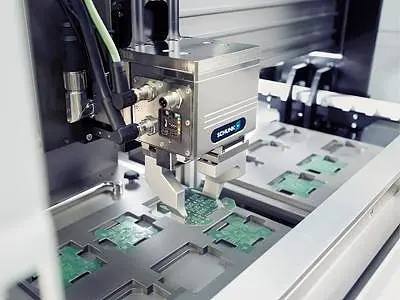Flexible circuits have become an integral part of modern electronic devices. From smartphones and tablets to medical devices and aerospace equipment, flexible circuits are widely used due to their ability to provide enhanced performance while allowing compact and flexible designs. However, the manufacturing process of flexible circuits, known as flex circuit assembly, involves several critical steps that require careful handling and attention to detail. In this blog post, we will explore the key steps involved in the flex circuit assembly process.
1. Design layout:
The first step in flex circuit assembly is the design and layout phase. This is where the board is designed and its components are placed on it. The layout must conform to the desired shape and size of the final flex circuit. Design software such as CAD (Computer Aided Design) is used to create and manipulate the layout, ensuring that all necessary connections and components are included.
2. Material selection:
Selecting the correct material is critical during flex circuit assembly. The choice of material depends on various factors such as the flexibility, durability and electrical performance required for the circuit. Materials commonly used in flexible circuit assembly include polyimide film, copper foil, and adhesives. These materials need to be sourced carefully as their quality directly affects the overall performance and reliability of the flex circuit.
3. Imaging and etching:
Once the design and material selection are complete, the next step is imaging and etching. In this step, the circuit pattern is transferred onto the copper foil using a photolithography process. A light-sensitive material called a photoresist is coated on the copper surface and the circuit pattern is exposed on it using ultraviolet light. After exposure, the unexposed areas are removed by a chemical etching process, leaving the desired copper traces.
4. Drilling and patterning:
After the imaging and etching steps, the flex circuit is drilled and patterned. Precision holes are drilled on circuit boards for placement of components and interconnects. The drilling process requires expertise and precision, as any misalignment could result in incorrect connections or damage to circuits. Patterning, on the other hand, involves creating additional circuit layers and traces using the same imaging and etching process.
5. Component placement and soldering:
Component placement is a critical step in flex circuit assembly. Surface Mount Technology (SMT) and Through Hole Technology (THT) are common methods for placing and soldering components onto flex circuits. SMT involves attaching components directly to the surface of the board, while THT involves inserting components into drilled holes and soldering on the other side. Specialized machinery is used to ensure precise component placement and the best solder quality.
6. Testing and Quality Control:
Once the components are soldered onto the flex circuit, testing and quality control measures are implemented. Functional testing is performed to ensure that all components are functioning properly and that there are no opens or shorts. Conduct various electrical tests, such as continuity tests and insulation resistance tests, to verify the integrity of circuits. In addition, a visual inspection is performed to check for any physical defects or abnormalities.
7. Encapsulation and encapsulation:
After passing the required testing and quality control measures, the flex circuit is packaged. The encapsulation process involves applying a protective layer, usually made of epoxy or polyimide film, to the circuit to protect it from moisture, chemicals, and other external elements. The encapsulated circuit is then packaged into the desired form, such as a flexible tape or a folded structure, to meet the specific requirements of the final product.
In Summary:
The flex circuit assembly process involves several critical steps that are critical to ensure the production of high-quality flex circuits. From design and layout to packaging and packaging, each step requires careful attention to detail and adherence to strict quality control measures. By following these critical steps, manufacturers can produce reliable and efficient flex circuits that meet the demands of today’s advanced electronic devices.
Post time: Sep-02-2023
Back







